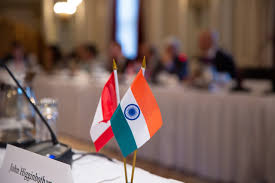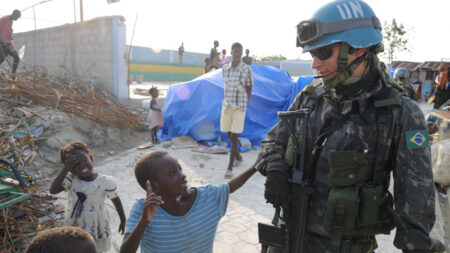In a nutshell
- Pakistan’s Consumer Price Index spiked to 35.37% in March, the highest in nearly five decades.
- The exponential hike was part of the economic modifications to unlock a bailout from the IMF.

Pakistan’s Consumer Price Index spiked to 35.37 in March, the highest in nearly five decades, according to the Pakistan Bureau of Statistics (PBS).
The annual food inflation rate hit 47.1% and 50.2% in March respectively in urban and rural areas. The core inflation, which excludes volatile energy and food prices, increased in March to 18.6% in urban areas and 23.1% in rural areas.
The inflation spike was triggered by high prices of consumer groups, including alcoholic beverages and tobacco.
The spike might prompt the State Bank to increase interest rates at a review scheduled for April 4.
To unlock financial aid
The exponential rise of fuel prices, electricity and gas tariffs, and tax hikes were part of the economic modifications to meet the demands for unlocking financial assistance from the International Monetary Fund. Discussions were going on between the global agency and the cash-strapped nation to release a loan of USD 1.1 billion.
However, the talks to secure the loan did not bear fruit. IMF urged Pakistan to seek assistance from external partners before it releases its funds.
Food fights across the country
The country is going through the most acute food crisis in its history. In a battered economy due to depleted foreign reserves and damage caused by floods, the Pakistan authorities struggle to meet the basic food needs of the people. Food fights are being recorded across the country.
At least 20 people, including women and children, were killed in a stampede at a Ramadan ration distribution site in Karachi last Friday.
The stampede occurred when nearly 700 people assembled at the site and started pushing each other, which led to the tragedy.
The death toll from similar stampedes at food distribution centers increased to 21 across the country.
Street crimes have increased dramatically as criminals steal phones and pillage stores in formerly secure regions, putting the state’s authority in jeopardy.
Soaring Prices
Prices are skyrocketing at a time when the economy has slowed dramatically and poverty and unemployment have risen enormously.

The consumer price index for transportation was 55%, entertainment, and culture was 51%, alcohol and tobacco were 140%, and perishable food was 52%.
In March, the price of onions hiked by 258% in cities and 303% in villages compared to the same month a year before, followed by a 177% increase in cigarettes, a 105% increase in tea, a 94% increase in wheat, an 83% increase in eggs, an 82% increase in ice, and a 70% increase in wheat flour.
Wheat, the staple meal for the vast majority of Pakistanis, has been out of reach after the coalition government made the political choice to raise basic food prices by 77% to Rs3,900 per 40kg.
According to the PBS, pulse prices increased by more than 60% last month, while vegetable ghee and cooking oil costs increased by roughly 42%.
The nation also faced an acute shortage in life-saving drugs and imported vaccines due to weakened local currency and the country’s controversial pricing mandates.
Inflation likely to rise
The Pakistan finance ministry warned in its Monthly Economic Update and Outlook that inflation is likely to rise further as a result of a second round of prior policy decisions to bump up energy and fuel prices, the central bank’s policy rate, and the rupee’s devaluation to secure the IMF bailout.
checkout article about Retail inflation dips to 6.44% in February.













